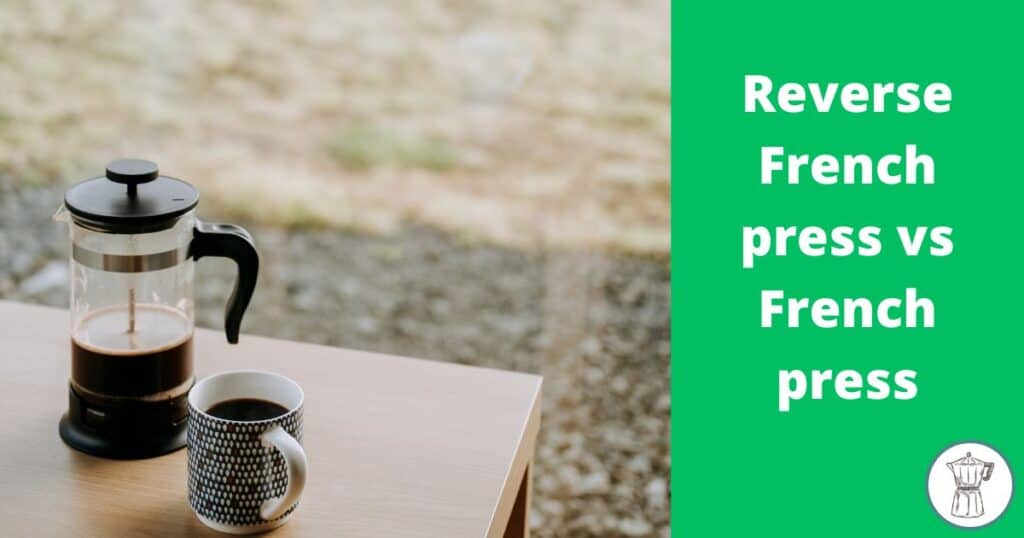You might be wondering ‘What is reverse French press and how it works?’
If you landed on the page, the odds are that you might have heard of the term but you’re not quite sure what it is and how it works. Stick around, in this article, I’m going to share with you exactly what you need to know about this unusual, innovative product that’s fun to use.
Let’s kick off.
What is reverse French press?
It’s almost the same way as brewing coffee with a French press. The main difference is that instead of pushing down the plunger, you pull it up. This makes it easier to clean the inside of your French press as you use a filter to collect the coffee residue.
French Press vs. reverse French press?
Let’s compare the 2 to help you get a better understanding of how a reverse French press works:
- The process: when using a French press add the coffee grounds and hot water leave for a couple of minutes to bloom and press the plunger down. On the other hand, with the reverse French press process you press the plunger all the way down and put a filter on the bottom, then you add hot water and the coffee grounds and pull the plunger up which collects all the coffee residue, so none of it ends up in your cup.
- The filter: typically when using a French press there are no filters involved in the process whereas a filter is needed when brewing with a reverse French press.
What are the benefits of using a reverse French press?
Let’s take a look at 2 clear benefits of a reverse French press.
Cleaning
Let’s face it everyone hates cleaning; after you’re done with the brewing all you need is to enjoy your coffee without worrying about cleaning or any other chores.
The good news is that cleaning a reverse French press is easier simply because it has a filter attached that scoops all the coffee residue – many times residue ended up in my mug when I brewed with a French press and tbh it’s a bit offputting – a reverse French press solves this problem.
Avoid bitter coffee
A common issue you face when you brew with a French press is bitter coffee.
Why is that?
A French press can brew 8-12 cups of coffee at once; if you don’t have it all at once the unused coffee turns bitter the longer it stays in the cylinder as it’s mixing up with the coffee grounds.
Because you remove the coffee grounds from the reverse French press during the brewing process, the coffee doesn’t turn more bitter irrespective of how long it stays in the cylinder.
Why is French Press less healthy?
Coffee brewed with a French Press is typically high in cafestol which can cause cholesterol in the long run.
This happens because the coffee isn’t filtered and the coarse coffee grounds that
are used for brewing with a French press typically contain higher levels of coffee oils and lipids.
Should you avoid it then?
I’d say brew with a French press in moderation and you’ll be just fine.
Let’s wrap it up
You made it to the end. Good job, I believe you know more about a reverse French press. It would be good fun to experiment a little bit now and try to brew delicious coffee with a reverse French press to see if it’s something you really fancy using as an alternative method for brewing coffee.

- How to Remove Coffee Stains From Countertop The Easy Way - December 21, 2023
- Can You Reuse Coffee Grounds in French Press? Truth Inside - December 12, 2023
- Can Expired Coffee Creamer Make You Sick? 3 Ways to Find Out - December 9, 2023
